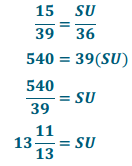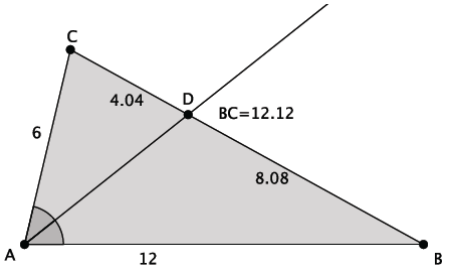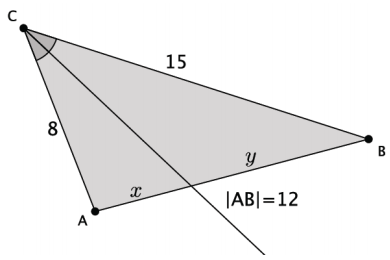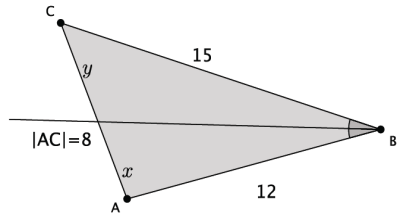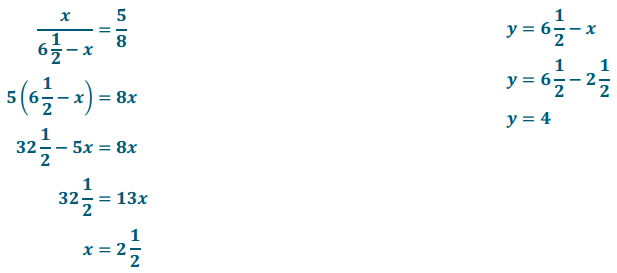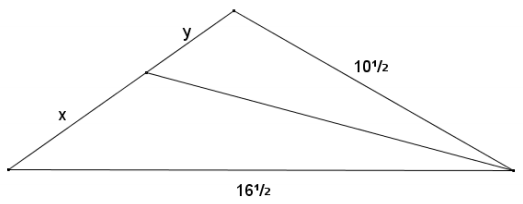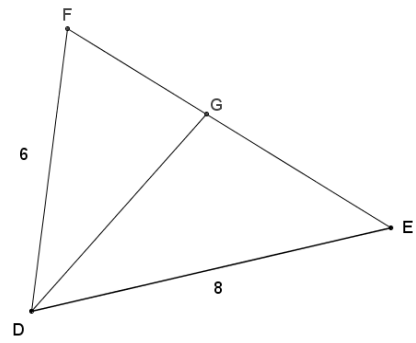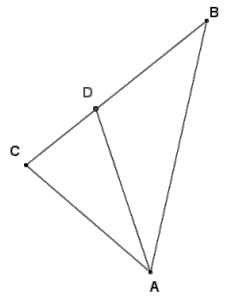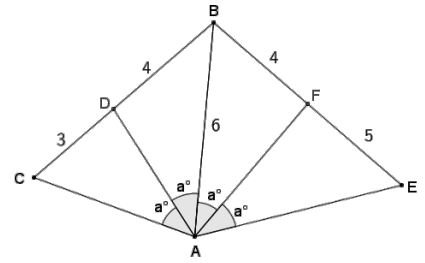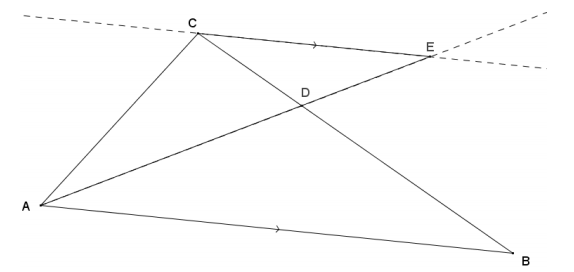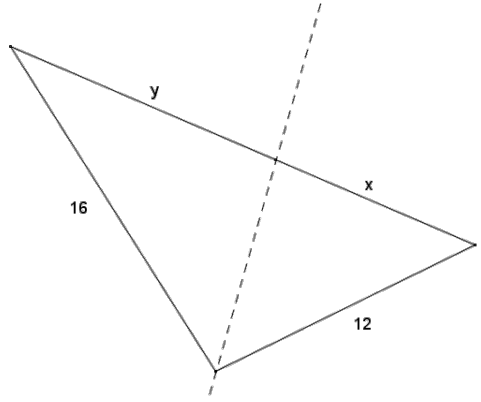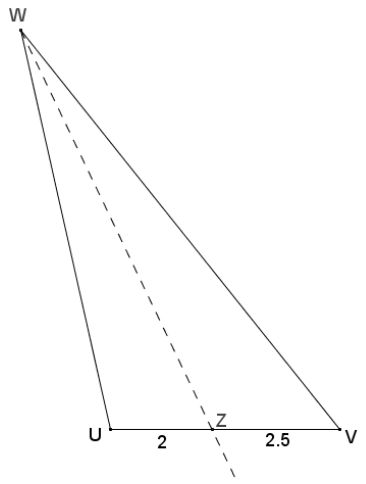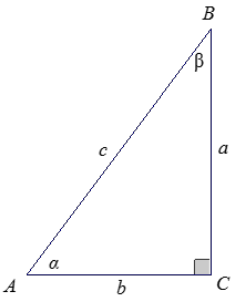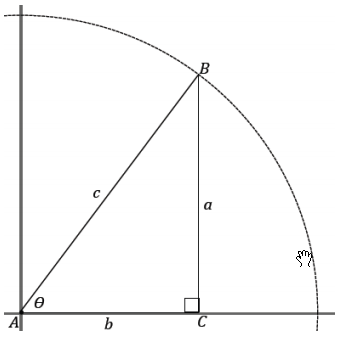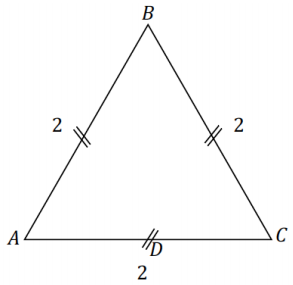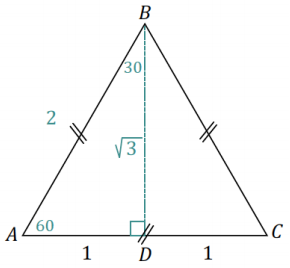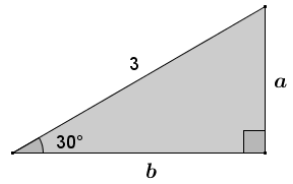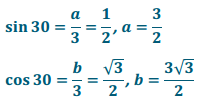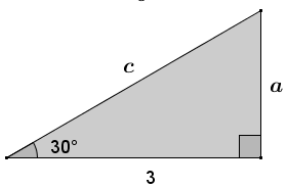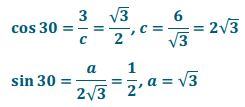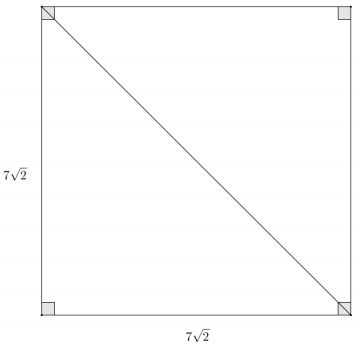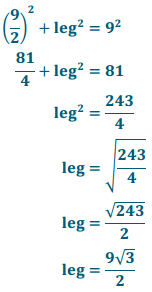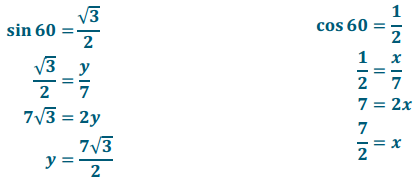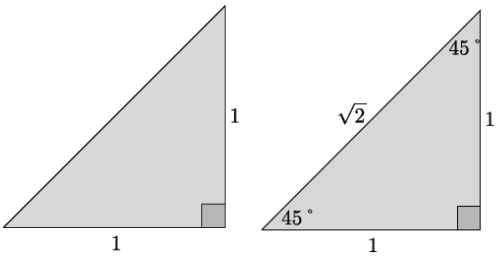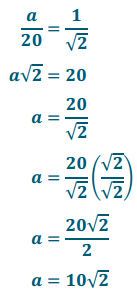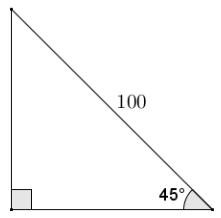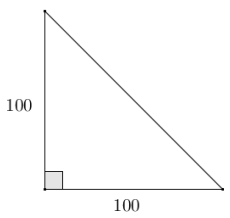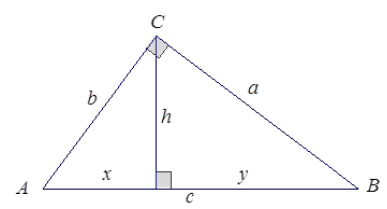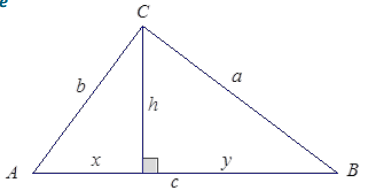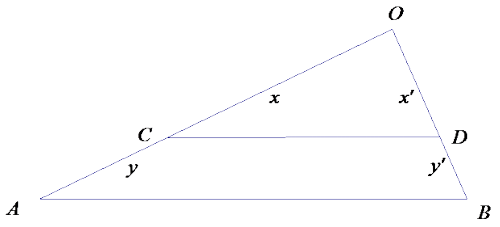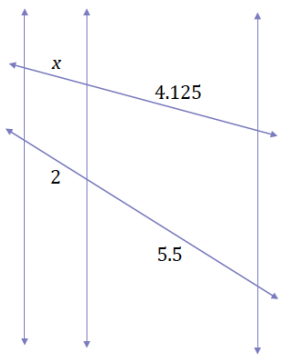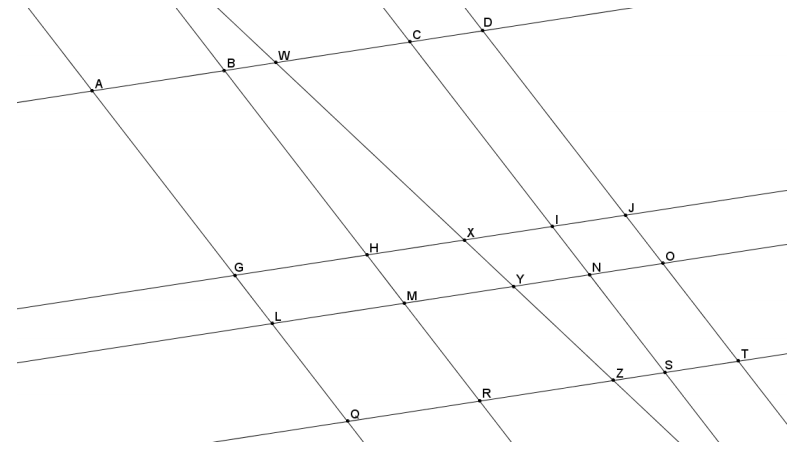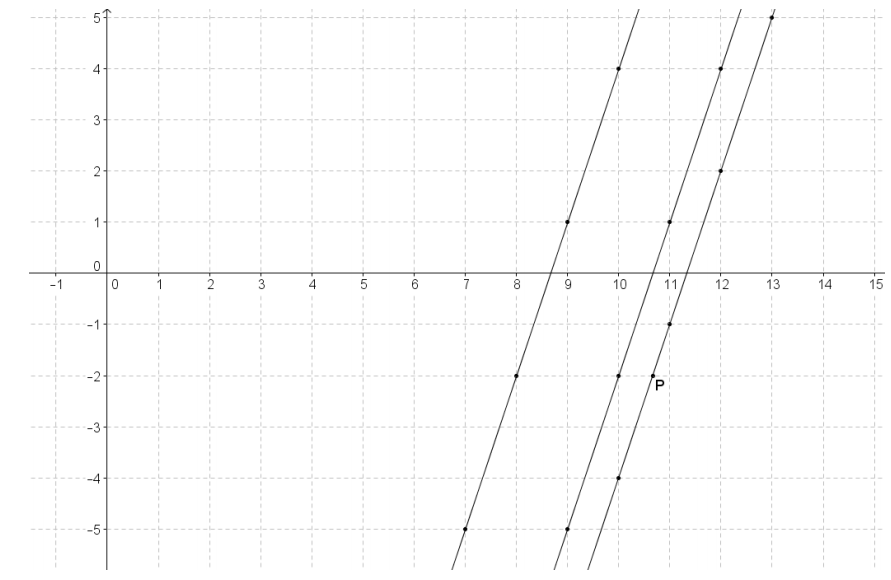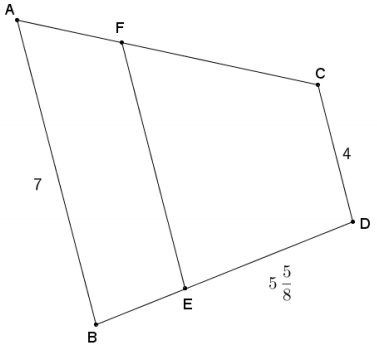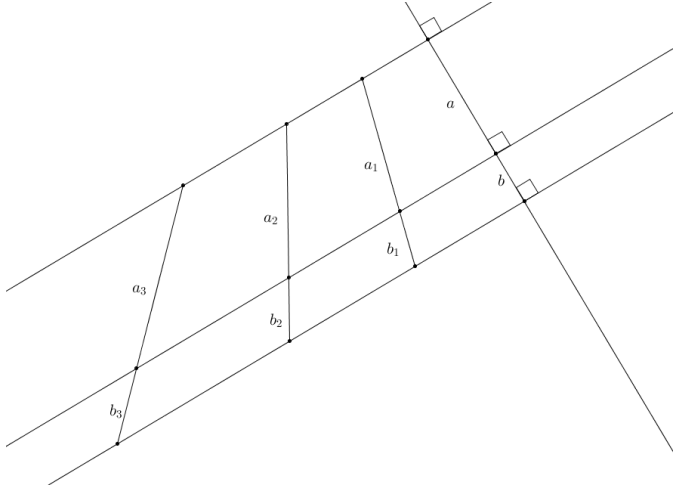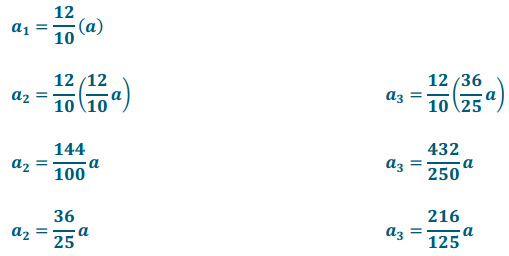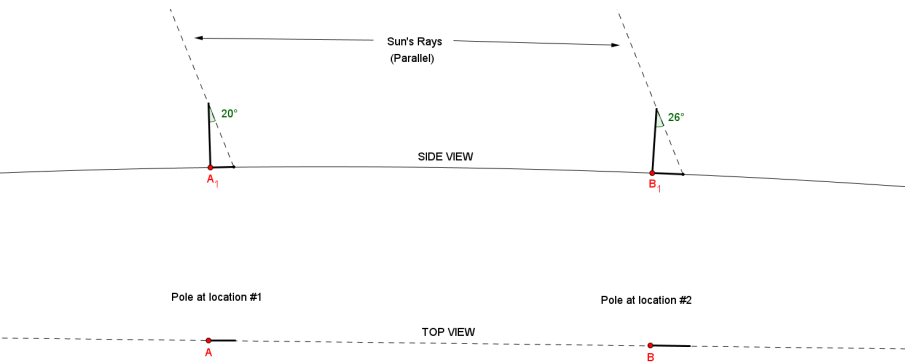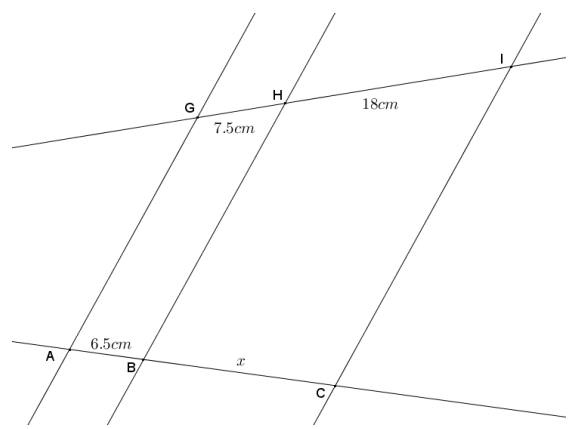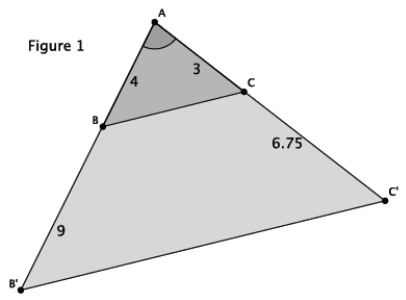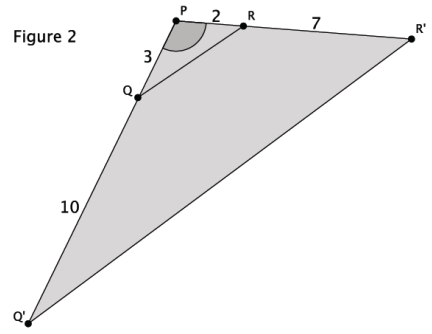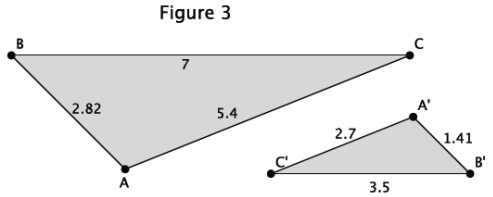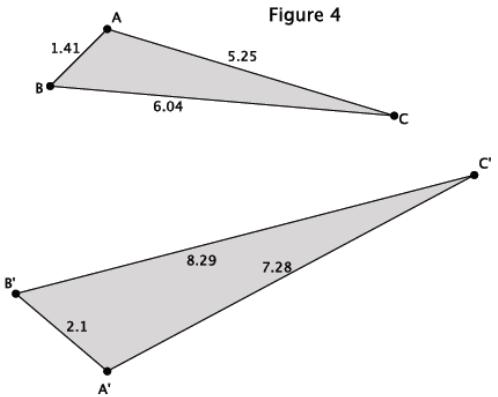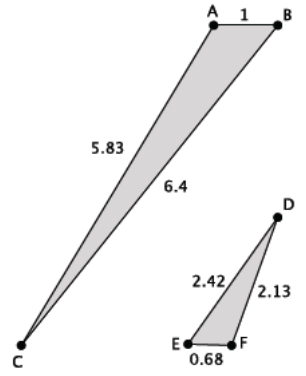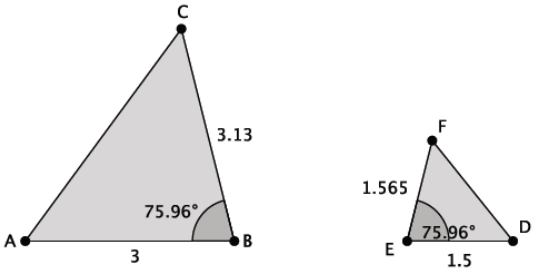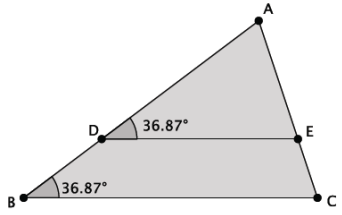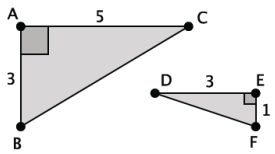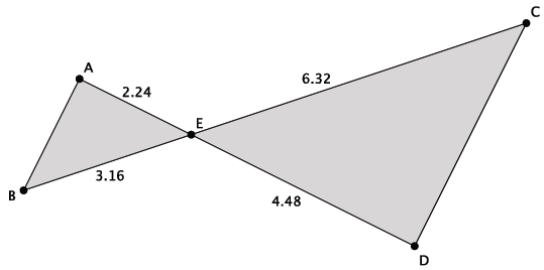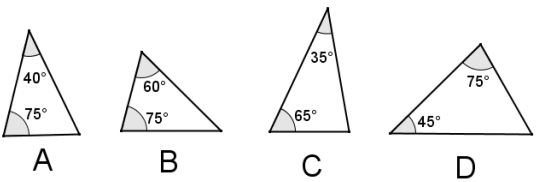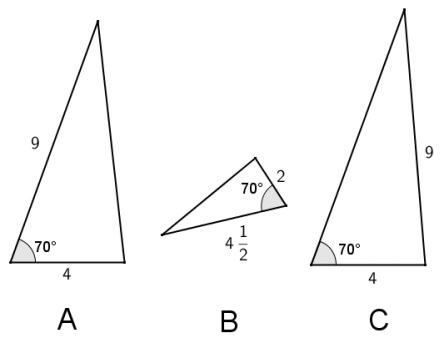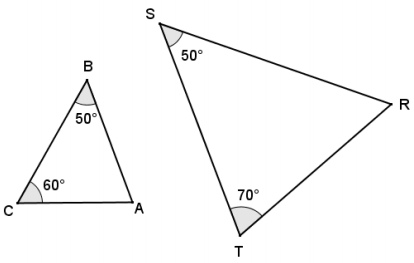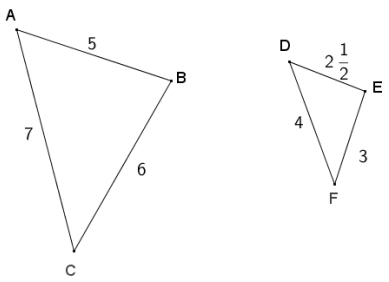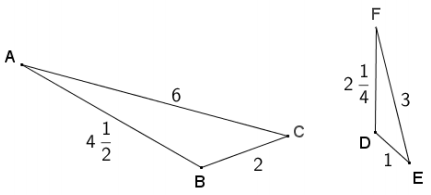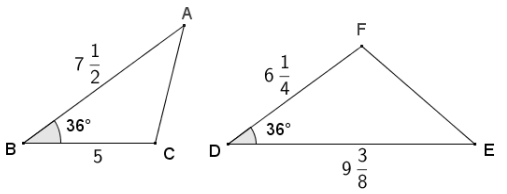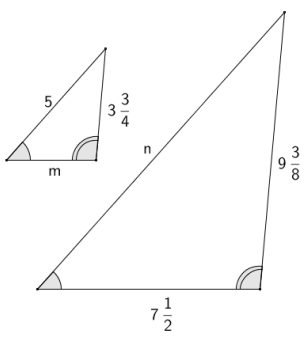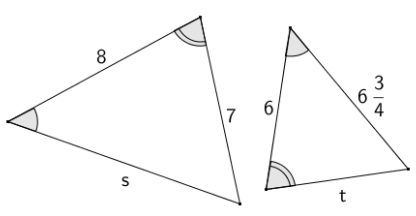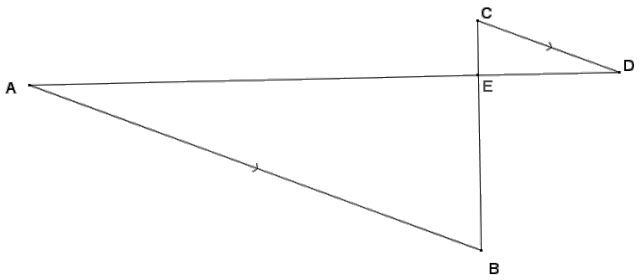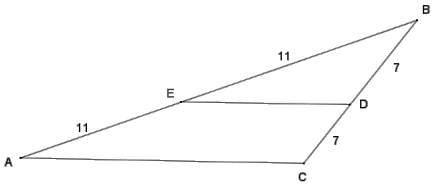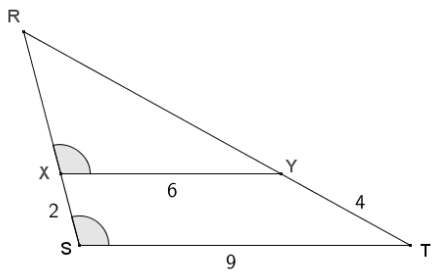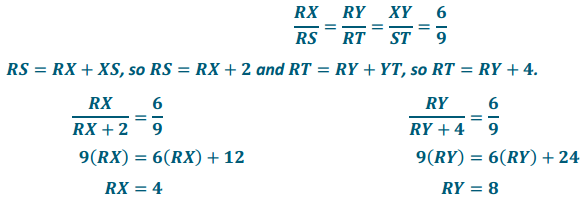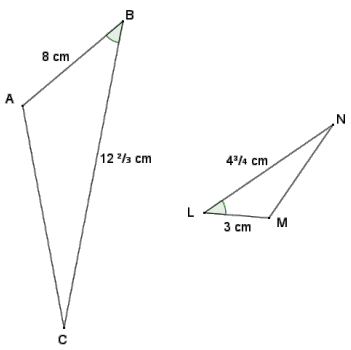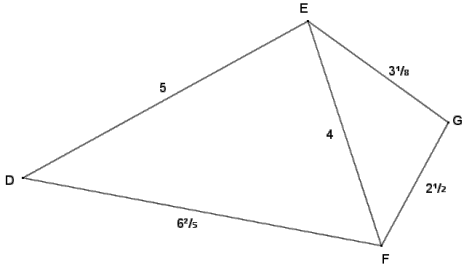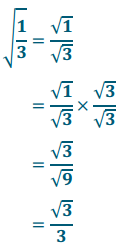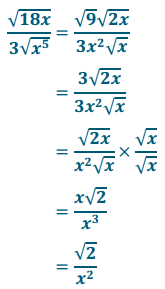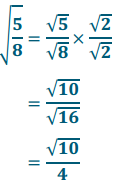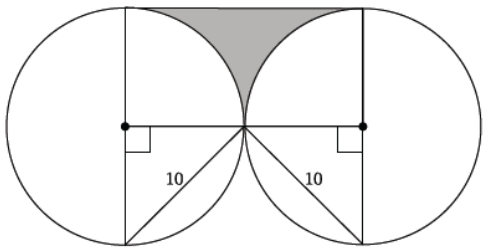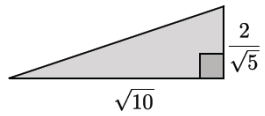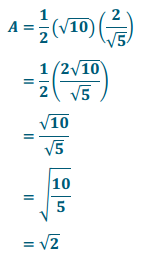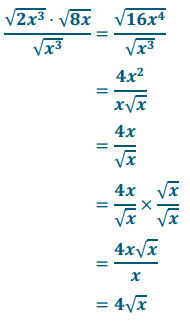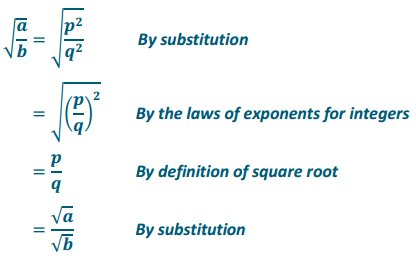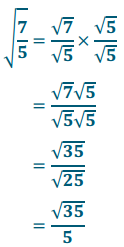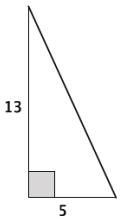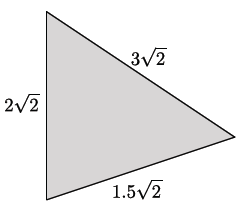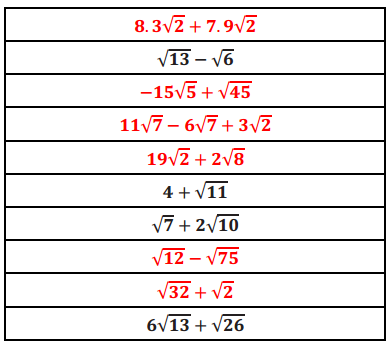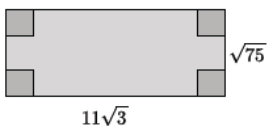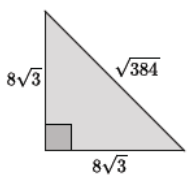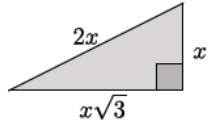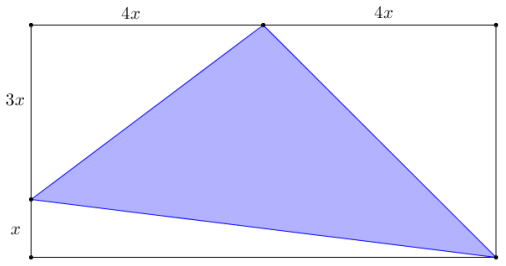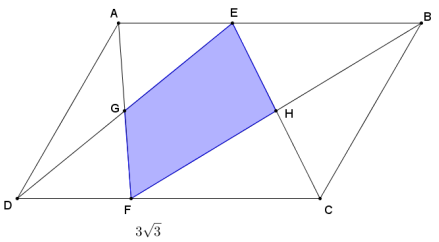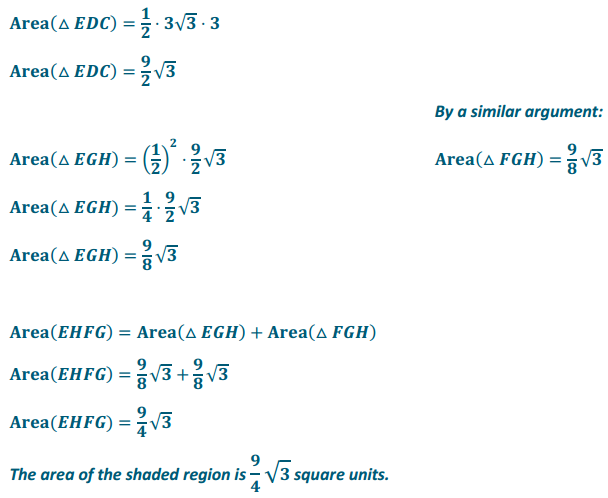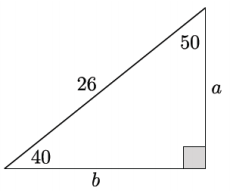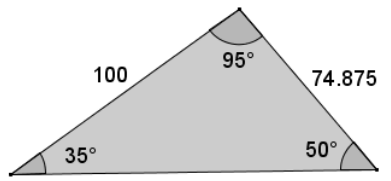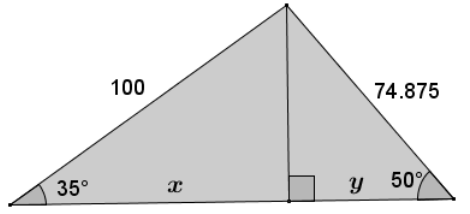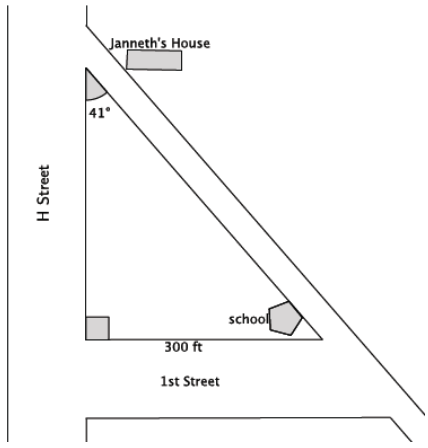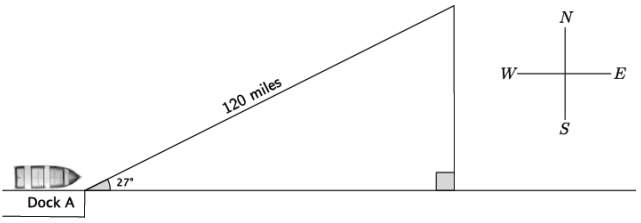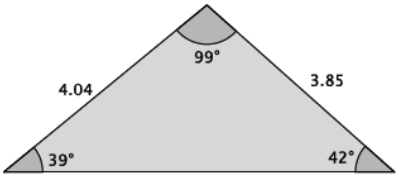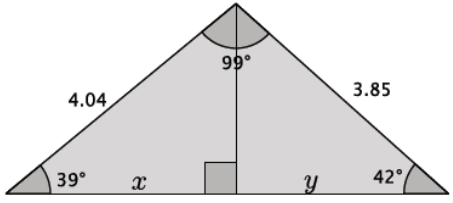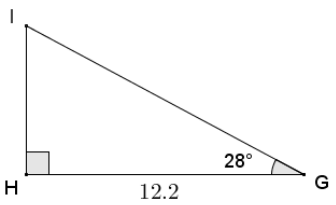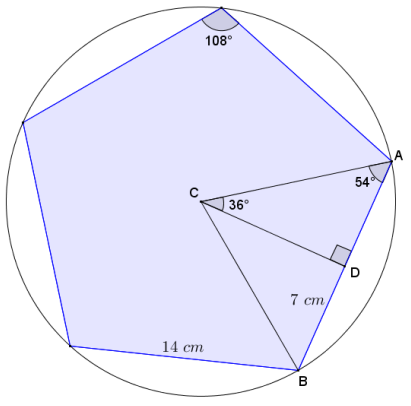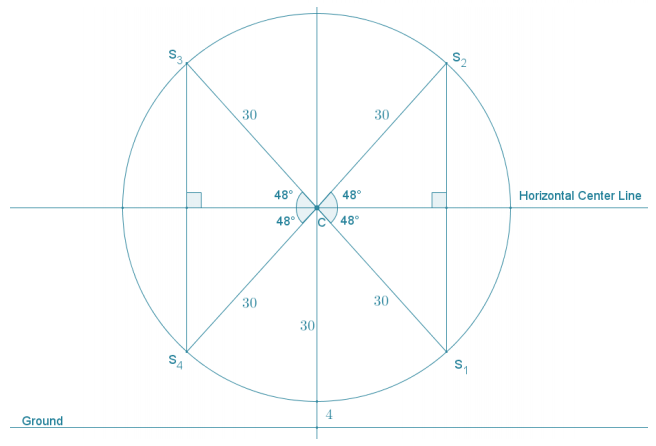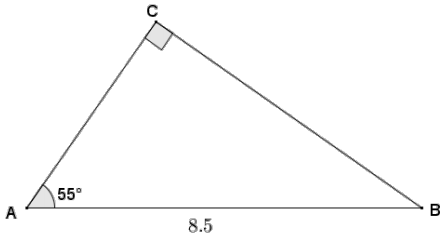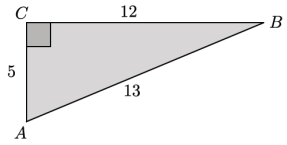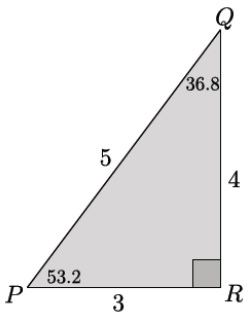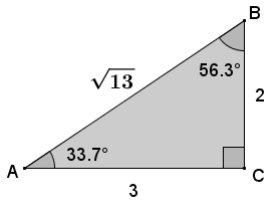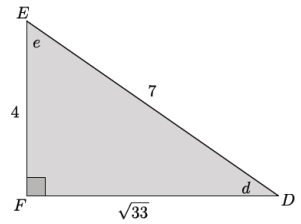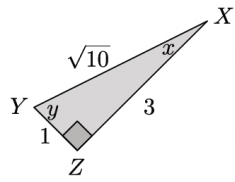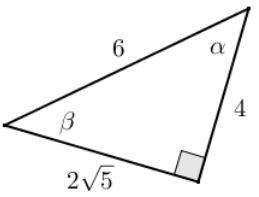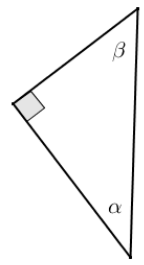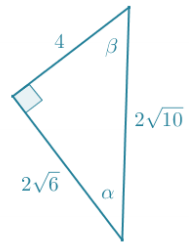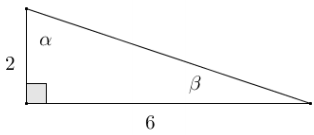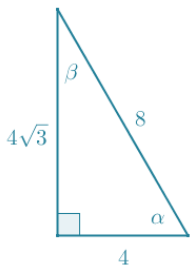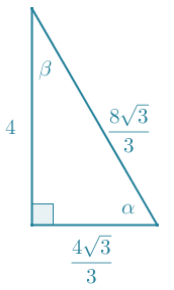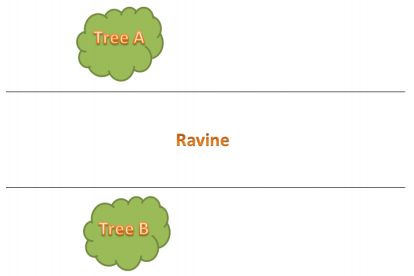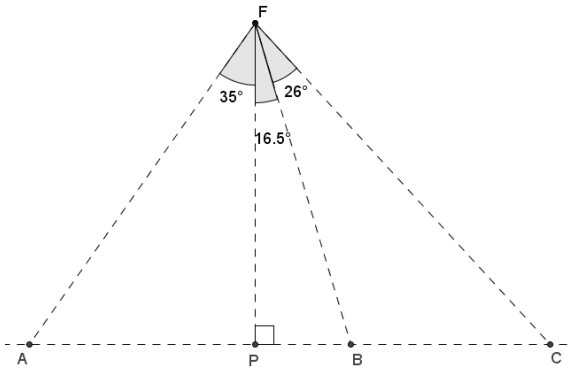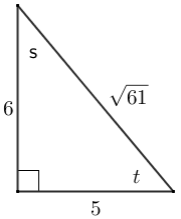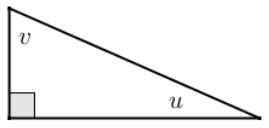Engage NY Eureka Math Geometry Module 2 Lesson 21 Answer Key
Eureka Math Geometry 2 Module 2 Lesson 21 Example Answer Key
Example 1.
Recall that an altitude of a triangle is a perpendicular line segment from a vertex to the line determined by the opposite side. In ∆ ABC below, \(\overline{B D}\) is the altitude from vertex B to the line containing \(\overline{A C}\).
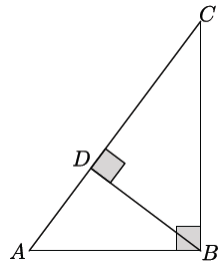
a. How many triangles do you see n the figure?
Answer:
There are three triangles in the figure.
b. Identify the three triangles by name.
Note that there are many ways to name the three triangles. Ensure that the names students give show corresponding angles.
Answer:
∆ ABC, ∆ ADB, and ∆ BDC.
We want to consider the altitude of a right triangle from the right angle to the hypotenuse. The altitude of a right triangle splits the triangle Into two right triangles, each of which shares a common acute angle with the original triangle. In ∆ ABC, the altitude \(\overline{B D}\) divides the right triangle into two sub-triangles, ∆ BDC and ∆ ADB.
c. Is ∆ ABC ~ ∆ BDC? Is ∆ ABC ~ ∆ ADB? Explain.
Answer:
∆ ABC and ∆ BDC are similar by the AA criterion. Each has a right angle, and each shares ∠C. ∆ ABC and ∆ ADB are similar because each has a right angle, and each shares ∠A, so, again, these triangles are similar by the AA criterion.
d. Is ∆ ABC ~ ∆ DBC? Explain.
Answer:
∆ ABC and ∆ DBC are not similar, because their corresponding angles, under the given correspondence of vertices, do not have equal measure.
e. Since ∆ ABC ~ ∆ BDC and ∆ ABC ~ ∆ ADB, can we conclude that ∆ BDC ~ ∆ ADB? Explain.
Answer:
Since similarity is transitive, ∆ ABC ~ ∆ BDC and ∆ ABC ~ ∆ ADB implies that ∆ ABC ~ ∆ BDC ~ ∆ ADB.
f. Identify the altitude drawn in ∆ EFG.
Answer:
\(\overline{G H}\) is the altitude from vertex G to the line
containing \(\overline{E F}\).

g. As before, the altitude divides the triangle into two sub-triangles, resulting in a total of three triangles including the given triangle. Identify them by name so that the corresponding angles match up.
Answer:
∆ EFG, ∆ GFH, and ∆ EGH
h. Does the altitude divide ∆ EFG into two similar sub-triangles as the altitude did with ∆ ABC?
Answer:
Yes.
Example 2
Consider the right triangle ∆ ABC below.
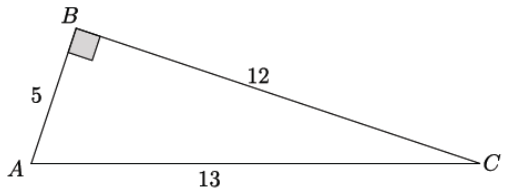
Draw the altitude \(\overline{B D}\) from vertex B to the line containing \(\overline{A C}\). Label \(\overline{A D}\) as x, \(\overline{D C}\) as y, and \(\overline{B D}\) as z.
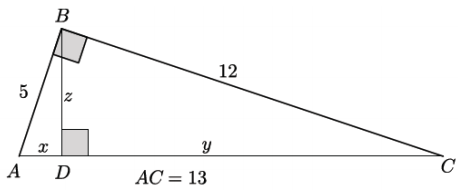
Find the values of x, y, and z.
Answer:
Provide students time to find the values of x, y, and z. Allow students to use any reasonable strategy to complete the task. The suggested time allotment for this part of the example is 5 minutes. Next, have students briefly share their solutions and explanations for finding the lengths x = 1\(\frac{12}{13}\), y = 11\(\frac{1}{13}\), and z = 4\(\frac{8}{13}\). For example, students may first use what they know about similar triangles and corresponding side lengths having equal ratios to determine x, then use the equation x + y = 13 to determine the value of y, and finally use the Pythagorean theorem to determine the length of z.
Now we will look at a different strategy for determining the lengths of X, y, and z. The strategy requires that we complete a table of ratios that compares different parts of each triangle.
Answer:
Students may struggle with the initial task of finding the values of x, y, and z. Encourage them by letting them know that they have all the necessary tools to find these values. When transitioning to the use of ratios to find values, explain any method that yields acceptable answers. We are simply looking to add another tool to the toolbox of strategies that apply in this situation.
Provide students a moment to complete the ratios related to ∆ ABC.
Make a table of ratios for each triangle that relates the sides listed in the column headers.

Answer:


Our work in Example 1 showed us that ∆ ABC ~ ∆ ADB ~ ∆ CDB. Since the triangles are similar, the ratios of their corresponding sides are equal. For example, we can find the length of x by equating the values of shorter leg: hypotenuse ratios of ∆ ABC and ∆ ADB.
\(\frac{x}{5}=\frac{5}{13}\)
13x = 25
\(\frac{25}{13}=1 \frac{12}{13}\)
Why can we use these ratios to determine the length of x?
Answer:
We can use these ratios because the triangles are similar. Similar triangles have ratios of corresponding sides that are equal We also know that we can use ratios between figures or within figures. The ratios used were within-figure ratios.
Which ratios can we use to determine the length of y?
Answer:
To determine the value of y, we can equate the values longer leg: hypotenuse ratios for ∆ CDB and ∆ ABC.
\(\frac{y}{12}=\frac{12}{13}\)
13y = 144
\(\frac{144}{13}=11 \frac{1}{13}\)
Use ratios to determine the length of z.
Answer:
To determine the value of z, we can equate the values of longer leg: hypotenuse ratios for ∆ ADB and ∆ ABC:
\(\frac{z}{5}=\frac{12}{13}\)
13z = 60
z = \(\frac{60}{13}=4 \frac{8}{13}\)
To determine the value of z, we can equate the values of shorter leg: hypotenuse ratios for ∆ CDB and ∆ ABC:
\(\frac{z}{12}=\frac{5}{13}\)
13z = 60
z = \(\frac{60}{13}=4 \frac{8}{13}\)
To determine the value of z, we can equate the values of shorter leg: longer leg ratios for ∆ ADB and ∆ ABC:

To determine the value of z, we can equate the values of shorter leg: longer leg ratios for ∆ CDB and ∆ ABC:
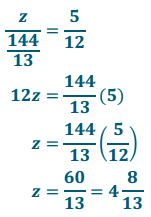
Since corresponding ratios within similar triangles are equal, we can solve for any unknown side length by equating the values of the corresponding ratios. In the coming lessons, we will learn about more useful ratios for determining unknown side lengths of right triangles.
Eureka Math Geometry 2 Module 2 Lesson 21 Opening Exercise Answer Key
Use the diagram below to complete parts (a)-(c).

a. Are the triangles shown above similar? Explain.
Answer:
Yes, the triangles are similar by the AA criterion. Both triangles have a right angle, and m∠A = m∠X and m∠C = m∠Z.
b. Determine the unknown lengths of the triangles.
Answer:
Let x represent the length of \(\overline{Y Z}\).
\(\frac{3}{2}=\frac{x}{1.5}\)
2x = 4.5
x = 2.25
Let y be the length of the hypotenuse of ∆ ABC.
22 + 32 = y2
4 + 9 = y2
13 = y2
√13 = y
Let z be the length of the hypotenuse of ∆ XYZ.
1. 52 + 2.22 = z2
2.25 + 5.0625 = z2
7.3125 = z2
\(\sqrt{7.3125}\) = z
c. Explain how you found the lengths in part (a).
Answer:
Since the triangles are similar, I used the values of the ratios of the corresponding side lengths to determine the length of \(\overline{X Z}\). To determine the lengths of \(\overline{A C}\) and \(\overline{Y Z}\), I used the Pythagorean theorem.
Eureka Math Geometry 2 Module 2 Lesson 21 Problem Set Answer Key
Question 1.
a.
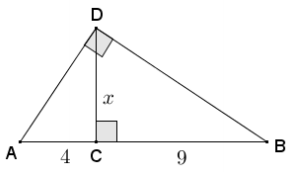
Answer:
∆ ACD ~ ∆ DCB by AA criterion, so corresponding sides are
proportional.
\(\frac{x}{4}=\frac{9}{x}\)
x2 = 36
x = √6 = 6
b.
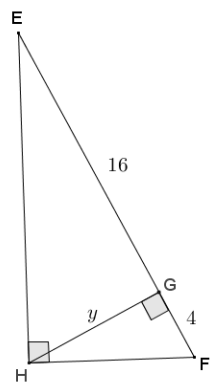
Answer:
∆ GHE ~ ∆ GFH by AA criterion, so corresponding sides are
proportional.
\(\frac{y}{4}=\frac{16}{y}\)
y2 = 64
y = √64 = 8
c.
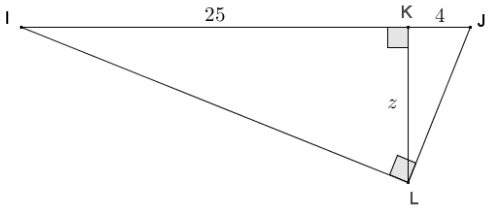
Answer:
∆ LKI ~ ∆ IKL by AA criterion, so corresponding sides are proportional:
\(\frac{z}{25}=\frac{4}{z}\)
z2 = 100
y = √100 = 10
d. Describe the pattern that you see in your calculations for parts (a) through (c).
Answer:
For each of the given right triangles, the length of the altitude drawn to its hypotenuse is equal to the square root of the product of the lengths of the pieces of the hypotenuse that it cuts.
Question 2.
Given right triangle EFG with altitude \(\overline{F H}\) drawn to the hypotenuse, find the lengths of \(\overline{E H}\), \(\overline{F H}\), and \(\overline{G H}\).
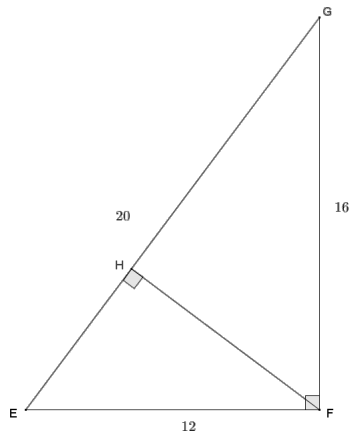
Answer:
The altitude drawn from F to H cuts triangle EFG into two similar sub-triangles, providing the following correspondence:
∆ EFG ~ ∆ EHF ~ ∆ FHG
Using the ratio shorter leg: hypotenuse for the similar triangles:
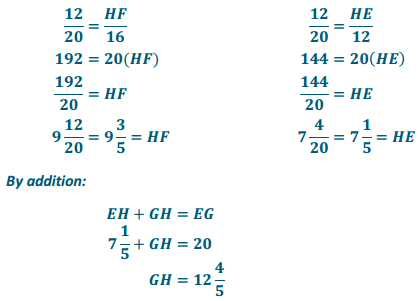
Question 3.
Given triangle IMJ with altitude \(\overline{J L}\), JL = 32, and IL = 24, find IJ, JM, LM, and IM.
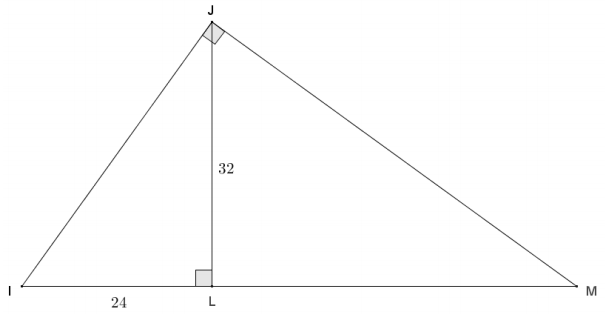
Answer:
Altitude \(\overline{J L}\) cuts ∆ IMJ into two similar sub-triangles such that ∆ IMJ ~ ∆ JML ~ ∆ IJL.
By the Pythagorean theorem:
242 + 322 = IJ2
576 + 1024 = IJ2
1600 = IJ2
√1600 = IJ
40 = IJ

Question 4.
Given right triangle RST with altitude \(\overline{R U}\) to its hypotenuse, TU = 1\(\frac{24}{25}\), and RU = 6\(\frac{18}{25}\), find the lengths of the sides of ∆ RST.
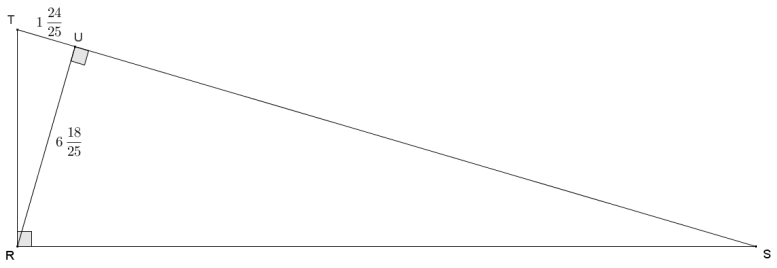
Answer:
Altitude \(\overline{R U}\) cuts ∆ RST Into similar sub-triangles: ∆ URT ~ ∆ USR.
Using the Pythagorean theorem:

Using the ratio shorter leg: hypotenuse:
\(\frac{\frac{49}{25}}{7}=\frac{7}{S T}\)
\(\frac{49}{25}\)ST = 49
ST = 25
Using the Pythagorean theorem:
RS2 + RT2 = ST2
RS2 + 72 = 252
RS2 + 49 = 625
RS2 = 576
RS = √576 = 24
Question 5.
Given right triangle ABC with altitude \(\overline{C D}\), find AD, BD, AB, and DC.
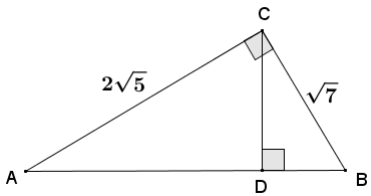
Answer:
Using the Pythagorean theorem:
(2√5)2 + (√7)2 = AB2
20 + 7 = AB2
27 = AB2
√27 = AB
3√3 = AB
An altitude from the right angle in a right triangle to the hypotenuse cuts the triangle into two similar right triangles: ∆ ABC ~ ∆ ACD ~ ∆ CBD.
Using the ratio shorter leg: hypotenuse:
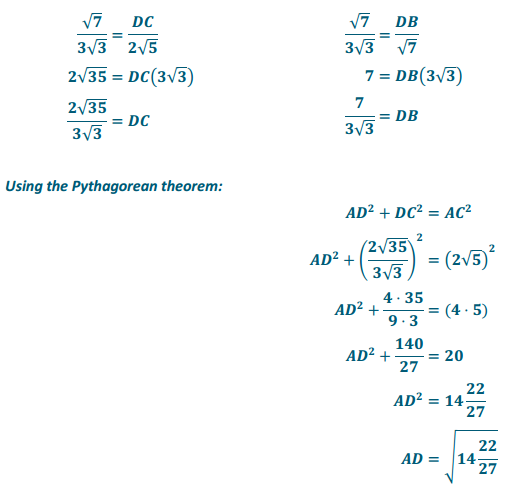
Question 6.
Right triangle DEC is inscribed in a circle with radius AC = 5. \(\overline{D C}\) is a diameter of the circle, \(\overline{E F}\) is an altitude of ∆ DEC, and DE = 6. Find the lengths x and y.
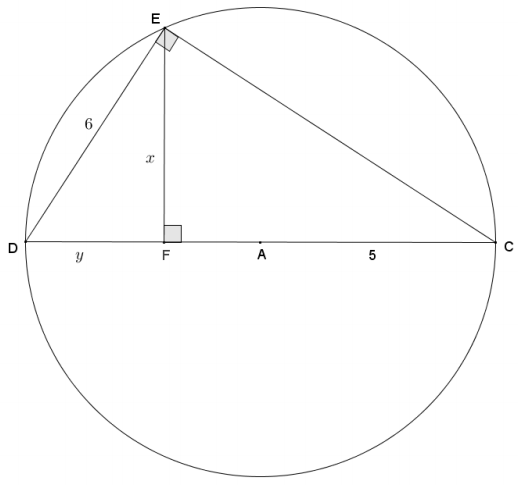
Answer:
The radius of the circle is 5, and DC = 2(5) = 10.
By the Pythagorean theorem:
62 + EC2 = 102
36 + EC2 = 100
EC2 = 64
EC = 8
(EC = – 8 is also a solution; however, since EC represents a distance, its value must be positive, so the solution EC = – B is disregarded.)
We showed that an altitude from the right angle of a right triangle to the hypotenuse cuts the triangle into two similar sub-triangles, so
∆ DEC ~ ∆ DFE ~ ∆ EFC.
Using the ratio shorter leg: hypotenuse for similar right triangles:
\(\frac{6}{10}=\frac{y}{6}\) \(\frac{6}{10}=\frac{x}{8}\)
36 = 10y 48 = 10x
3.6 = y 4.8 = x
Question 7.
In right triangle ABD, AB = 53, and altitude DC = 14. Find the lengths of \(\overline{B C}\) and \(\overline{A C}\).
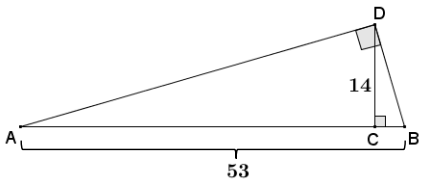
Answer:
Let length BC = x. Then, AC = 53 – x.
Using the pattern from Problem 1,
142 = x(53 – x)
196 = 53x – x2
x2 – 53x + 196 = 0
(x – 49) (x – 4) = 0
x = 49 or x = 4.
Using the solutions from the equation and the given information, either BC = 4 and AC = 49, or BC = 49 and AC = 4.
Eureka Math Geometry 2 Module 2 Lesson 21 Exit Ticket Answer Key
Given ∆ RST, with altitude \(\overline{S U}\) drawn to its hypotenuse, ST = 15, RS = 36, and RT = 39, answer the questions below.
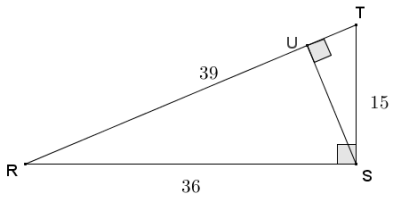
Question 1.
Complete the similarity statement relating the three triangles in the diagram.
∆ RST ~ ∆ _______ ~ ∆ ________
Answer:
∆ RST ~ ∆ RUS ~ ∆ SUT
Using the right angles and shared angles, the triangles are similar by AA criterion. The transitive property may also be used.
Question 2.
Complete the table of ratios specified below.

Answer:

Question 3.
Use the values of the ratios you calculated to find the length of \(\overline{S U}\).
Answer:
